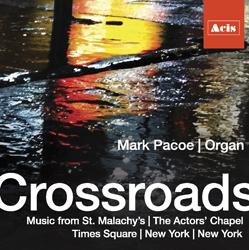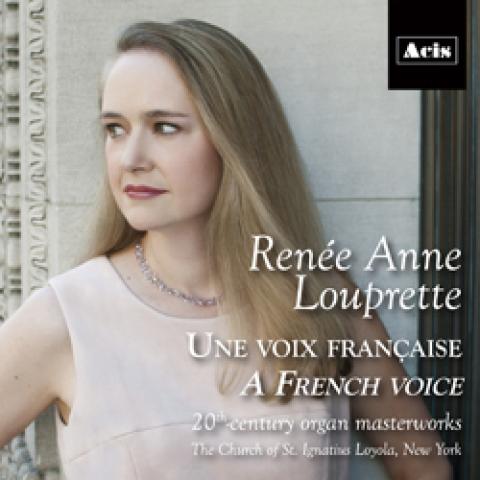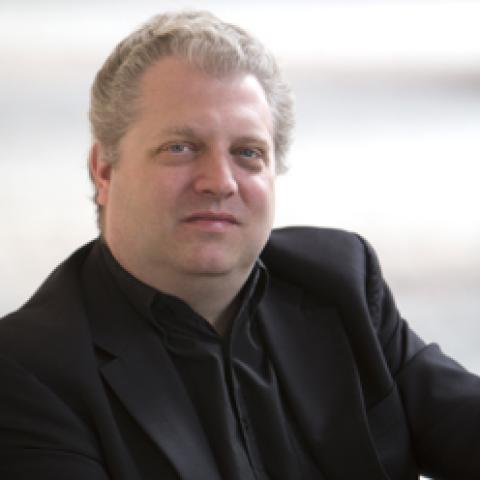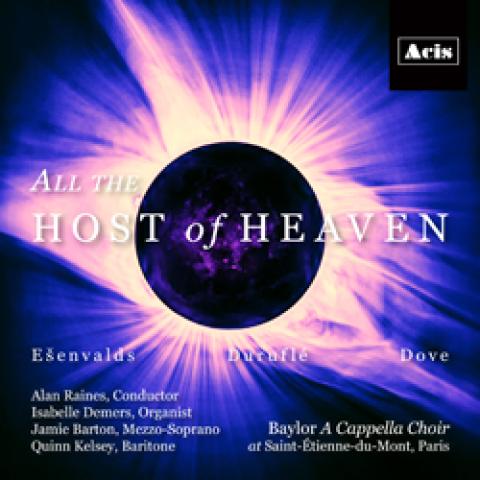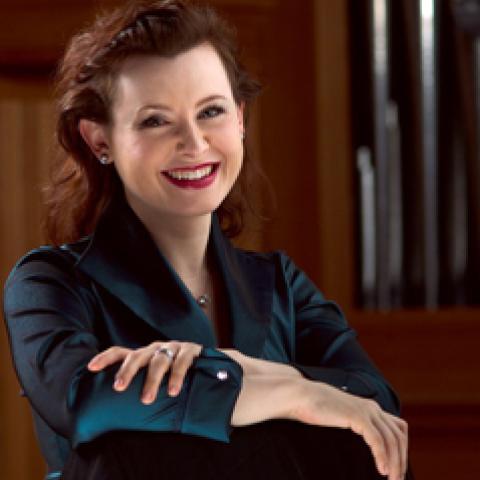Peragallo Pipe Organ Company,
Paterson, New Jersey
St. Malachy’s—The Actors’ Chapel, New York City
The music ministry at St. Malachy’s Church in New York City
On Monday, January 20, 2012, the New York Times published a feature article on the Paul Creston Memorial Pipe Organ, Aeolian-Skinner (1935), Opus 938, that was relocated to St. Malachy’s—The Actors’ Chapel, New York City, and rebuilt, renovated, and enhanced by the Peragallo Pipe Organ Company (2012) of Paterson, New Jersey. This vintage instrument has a storied past, which, coupled with its remarkable ‘rebirth,’ makes it a cultural landmark in its new home in the heart of New York City’s Theater District, the performing arts capital of the world.
In 2007, the late John Peragallo, Jr. received a call from a church in East Orange, New Jersey (formerly Hillside Presbyterian Church) about the organ, which had been damaged from a water leak in the roof. There was significant damage to the console, but the majority of the instrument, including the pipes and chests, remained mostly in good condition. However, the church no longer had the ability to maintain or use the organ and it was days away from being thrown away. Upon hearing this, Peragallo said to hold off on demolition. He returned the next day with his staff to dismantle the organ and began looking for a new home for it. John Peragallo, Jr.’s next call was to his friend, Reverend Richard D. Baker, pastor at St. Malachy’s—The Actors’ Chapel, to consider this instrument for installation at the church. With the guidance of then director of music Daniel Brondel, a proposal was developed in 2008. It was not until current director of music Mark Pacoe arrived in January 2009, that the project would gain traction. A comprehensive and multi-faceted fundraising and education campaign was launched in early 2009.
Over the next few years (2009–2012), St. Malachy’s Parish garnered widespread support for this extensive undertaking. St. Malachy’s is a relatively small parish that listed about 600 families on the register in 2009. Compared to its suburban counterparts that typically have rosters two and three times as large, St. Malachy’s is uniquely situated in the heart of the theater district and attracts regular visitors from around the world, as well as tourists on a daily basis. Fittingly, a campaign was developed to promote not only fundraising for this ‘King of Instruments,’ but also a liturgical and cultural outreach that resonates with all who visit and pray at The Actors’ Chapel. Through Fr. Baker’s vision, a high-quality music program, with its fine choral and liturgical tradition, was paramount in the challenge of acquiring such a fine, vintage instrument.
The new installation would be called the ‘Paul Creston Memorial Pipe Organ,’ honoring the legacy of the great American composer, who served as organist at St. Malachy’s from 1934–1967. During Creston’s time, there was a Kimball organ (15 stops) in the upper church and a Kilgen organ (20 stops) in the lower church (commonly referred to as The Actors’ Chapel, which was converted into the Encore Senior Center in 1978). Unfortunately, because of disrepair and other mitigating factors, both instruments were eventually removed in the late 1970s, when the church and the neighborhood were entrenched in difficult times and transition. Fr. George Moore was assigned to assess the dire existence of St. Malachy’s in the late 1970s, and became its pastor in 1978. Through Fr. Moore’s leadership, he re-galvanized St. Malachy’s influence and ministry in the neighborhood. Father Moore’s legacy is still felt today because of the measures he took then as a community activist and leader of the church. Throughout the 1990s and 2000s, Times Square and the Theater District became more attractive, commercial, and family friendly. The neighborhood surrounding St. Malachy’s was in the early years of a successful re-gentrification. While the church and surrounding areas were on the verge of ‘better days,’ it would be a very long time before a new pipe organ would sound again in the sacred place. In the 1980s, a two-manual electronic organ was installed and was used until obsolete in 2012.
One of the most important challenges of this pipe organ project was how to promote St. Malachy’s rich history, its location, and its mission and ministry; this special place needed a worthy and versatile American classic organ, namely Aeolian-Skinner. The essential part of this campaign resides in the legacy of St. Malachy’s own distinguished composer and organist, Paul Creston. Future generations will benefit from the campaign and the new organ that embody Creston’s timeless ideals. Paul Creston is hailed as one of America’s leading 20th-century composers. During the 1940s–1960s, Creston’s music was performed regularly by leading orchestras across the nation, including the New York Philharmonic, the Boston Symphony Orchestra, the National Symphony Orchestra, and the Seattle Symphony, to name a few. Legendary conductors such as Leopold Stokowski, Arturo Toscanini, Eugene Ormandy, and Gerard Schwarz championed Creston’s music. In addition to Creston’s prolific compositional output, he also published authoritative books on music and devoted himself to teaching and academia, especially following his time at St. Malachy’s. ‘The Creston Creed,’ a self-penned statement about his philosophy of music and composition, expressed his strongest sentiments in the spiritual nature of creativity, music-making, and well-being. Creston’s ‘credo’ became the foundation of the Paul Creston Award that was established in 2009. This annual award honors a distinguished artist who embodies the Creston Creed, excellence in the arts, and is a significant figure in church music and the performing arts.
The first recipient of the Paul Creston Award (2009) was Frederick Swann, internationally recognized church musician and concert artist. At this inaugural Creston Award event, coupled with the official launch of the pipe organ campaign, an all-Creston program, ‘The St. Malachy’s Years’, was presented at the church. This unusual program included Prelude and Dance for solo accordion, his well-known setting of Psalm 23 for countertenor, and the Concertino for Marimba and Orchestra. Craig R. Whitney, former assisting managing editor of the New York Times and author of All the Stops: The Glorious Pipe Organ and Its American Masters, presented the keynote address about the Aeolian-Skinner pipe organ, Opus 938. Whitney’s address recounted American organ building in the 1930s, organ builder and Opus 938 consultant G. Donald Harrison, Opus 938’s relevance to the acoustical space and future usage at St. Malachy’s, and most interestingly, a novel and entertaining narration that enlivened Paul Creston’s legacy through the organ at The Actors’ Chapel.
The second recipient of the Paul Creston Award (2010) was Bruce Neswick, then director of music at the Cathedral of St. John the Divine, New York City, now on the faculty at Indiana University, Bloomington. The award event featured a professional orchestra, the Salvatones (a professional choral ensemble), and the New York Boychoir. This program, ‘Creston’s New York’, included music by American composers Copland, Gershwin, Larsen, and Corigliano.
The third recipient of the award was David Higgs, chair of the organ department at the Eastman School of Music in Rochester, New York. Higgs was presented the award at ‘Voices United’, a benefit event for St. Malachy’s Outreach Ministries and Covenant House New York at the historic Beacon Theatre in New York’s Upper West Side in November 2012. Higgs presented the headlining recital for the inaugural season of the Paul Creston Memorial Pipe Organ in April 2013, co-sponsored by the New Jersey Metropolitan and New York City chapters of the American Guild of Organists. Higgs performed Creston’s rarely heard, complex solo organ work Fantasia. This co-sponsored event was the first of its kind between these two AGO chapters and coincidentally connected the heritage of Opus 938 from the New Jersey chapter to its new home in the New York chapter.
The Concerts at St. Malachy’s series was initially developed to benefit the organ campaign through diverse and distinct programming, featuring instrumental, choral, Broadway, opera, chamber and symphonic performers. Concerts at St. Malachy’s programs have included the Fairbanks Trio (Asimov, Nagin and Hopkins), Danilo Pina (piano), ‘Love Notes—from Broadway to Opera’ (NY Bar Association), the Three Cantors—from Sanctuary to Stage, the Salvatones, the Orchestra of St. Malachy’s, the New York Boychoir, Face the Music, the Auburn University Show Choir, the Virtuosi (wind) Quintet, Sweet Plantain String Quartet, and Simon Boyar, Daniel Brondel, Deborah Jamini, and Joanna Arnold Darrow in a performance of Creston’s music. For the inaugural year of the new organ, Concerts at St. Malachy’s launched the ‘Fridays in October’ post-theater organ recitals at 11 p.m., and the ‘Fridays in December’ pre-theater organ recitals at 6:30 p.m. Other special performances included silent films, the Educational Outreach Series for school-age children through college-level music appreciation classes, massed choral performances and collaborations between St. Malachy’s Choir and tri-state regional choral societies, as well as full-length feature recitals. Inaugural-year recitalists included David Higgs, Mark Pacoe, David Ball, Jon Johnson, Michael Hey, Crista Miller, James Wetzel, Jonathan Ortloff, and Vincent Carr.
The builders
The new installation of Aeolian-Skinner Opus 938 (1935) was completed by the Peragallo Pipe Organ Company of Paterson, New Jersey. The Peragallo Pipe Organ Company was founded in 1918 by John Peragallo, Sr., who developed his craft as an apprentice with the E. M. Skinner Company. His son, John Peragallo, Jr., who was a member of the American Guild of Organists, joined the company in 1949.
Now in its fourth generation, the sons of John Jr., John Peragallo III and Frank Peragallo, having grown up in the business, now head the company. John III received his Bachelor of Science degree in Electrical Engineering from the New Jersey Institute of Technology and also studied organ with Russell Hayton of Montclair and Leonard Raver of the Juilliard School. He also pursued musical studies at the New York School of Liturgical Music. Frank studied cabinetmaking with the Salesian Brothers of Don Bosco.
John III and Frank are now joined by their sons, Anthony and John IV. Anthony received his Bachelor of Science degree in Finance from Montclair State University. John IV received the Bachelor of Science degree in Architecture and a Master’s of Architecture degree from the Catholic University of America in Washington, D.C.
The firm’s leadership is well rounded, with diverse skills and business acumen, and has distinguished the Peragallo Pipe Organ Company in fine pipe organ building and restoration.
The organ
The Paul Creston Memorial Pipe Organ includes 73 stops, 43 ranks of pipes, and 19 digitally sampled stops. These are all playable from two keydesks. A repurposed E. M. Skinner keydesk from Opus 524 is located in the gallery. The Aeolian-Skinner keydesk original to Opus 938 is located on the floor of the chancel. Both keydesks were completely updated with new key claviers and pedalboards, rocker tablets for stop control in the gallery keydesk and new drawknobs for the chancel keydesk.
The tonal design was slightly modified with the addition of Walker components, primarily to expand the existing small pedal division and for a new floating division in the chancel for support of choral accompaniment. Several ranks of pipes were also added, including a Great four-rank mixture (12-15-19-22), 16′ Violone (façade, with 8′ Violoncello on the Great), and a hooded solo reed, the Actors’ Trumpet, on eight inches of wind pressure. The ranks of the original Dolce Cornet III of the Swell division were separated and installed independently as a 22⁄3′ Nazard, 2′ Flautino, and 13⁄5′ Tierce. The Grave Mixture II of the Great Organ was also separated and installed as the 22⁄3′ Twelfth and the 2′ Fifteenth.
The casework of the instrument was designed and handcrafted to match the Gothic architectural style throughout the church. The façade includes the original pipes from the Aeolian-Skinner, along with the Violone 16′ comprising the towers. The case is adorned with gold accents found in the ceiling of the church and also features hand-crafted trefoil moldings and tower crowns featured throughout the nave.
The superb acoustic of the church, at about three seconds, is a result of the high, narrow, neo-Gothic vaulting of the room. The room seats 350 comfortably, and provides an intimate and aesthetically pleasing setting for the dynamically subtle yet powerful instrument. While only steps away from the bustling theaters of Broadway and the frenzy of Times Square, St. Malachy’s is a hidden gem, a sanctuary where tourists, parishioners, neighbors, and people from all walks of life feel welcomed.
For more information about St. Malachy’s—The Actors’ Chapel, the music calendar, and the Paul Creston Memorial Pipe Organ, see www.actorschapel.org or ‘Creston Memorial Pipe Organ’ on Facebook.
We recognize those who made this restoration and relocation possible: Reverend Richard Baker, Mark Pacoe, Peggy Pugh, Daniel Brondel, Benjamin Lorello, Andy Nerhbas, John Peragallo Jr., and the parishioners and supporters of St. Malachy’s Parish.
Information about the construction and rebuilding of this fine instrument can be found at www.peragallo.com.
—Mark Pacoe, Director of Music,
St. Malachy’s Church
—John Peragallo IV, Architectural Designer, Peragallo Organ Company
—John Peragallo III, Principal, Tonal Director, Peragallo Organ Company
